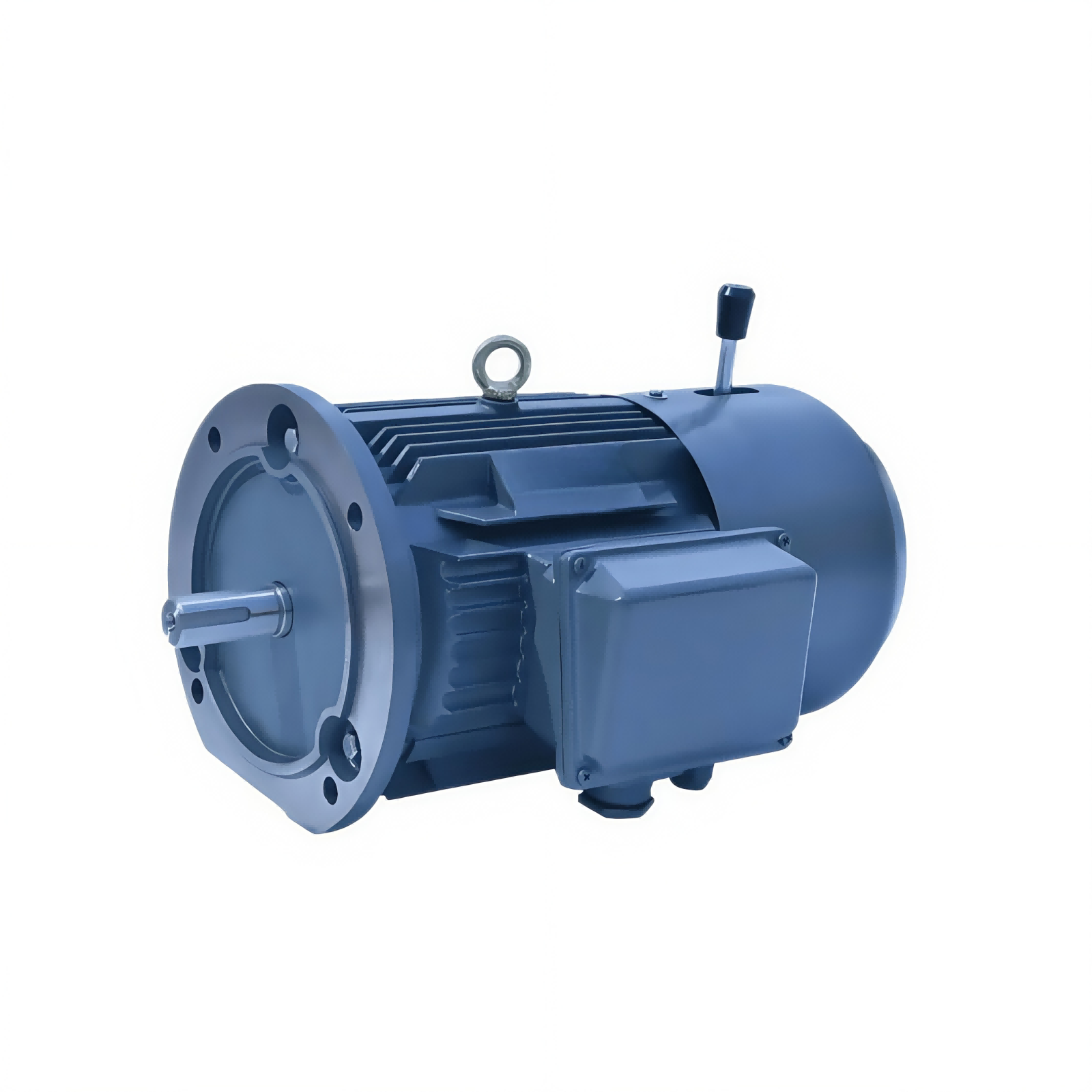How Synchronous Motors Achieve Superior Energy Efficiency
Reduced Energy Losses Through Advanced Design
When it comes to energy efficiency, synchronous motors stand out because of how they're built. They incorporate premium magnetic materials which cut down on those pesky hysteresis losses that waste so much power in other systems. The way these motors are wound also plays a big role in their performance, converting electricity into motion with remarkable effectiveness while losing very little along the way. Real world tests show some models reaching efficiency levels around 98 percent, way ahead of what standard motors can manage. For factories looking to trim expenses without sacrificing productivity, switching to synchronous motors often pays off quickly through reduced electricity bills and lower maintenance needs over time.
Maintaining Constant Speed Under Load Variations
One major benefit of synchronous motors lies in how they keep running at the same speed even when loads change. This makes them really important for things where exactness matters, like on factory floors where conveyor belts need to move products smoothly or water pumps must deliver consistent pressure. Studies from plant managers show that maintaining steady speeds actually improves how well machines work together and boosts the overall quality of what gets produced. When these motors run without fluctuating speeds, there are fewer stoppages during operations, and equipment just works better day after day across different types of industrial settings.
IE Efficiency Classifications Explained (IE3 to IE6)
Getting familiar with IEC efficiency ratings from IE3 all the way up to IE6 matters a lot when picking motors that save energy effectively. Most synchronous motors land in those top tiers IE5 and IE6, which means they bring real advantages on the factory floor. Manufacturing plants have seen these high-efficiency motors cut energy bills by around 10% versus older IE3 models, even though they cost more initially. While the price tag might seem steep at first glance, many facilities find the return on investment pays off within just a couple years through reduced power consumption. Knowing where different motor types stand in terms of efficiency helps plant managers decide whether upgrading makes financial sense for their particular operations while also supporting greener manufacturing practices across the board.
Critical Role in Sustainable Industrial Operations
Driving Carbon Capture and Storage Systems
Synchronous motors have become really important in carbon capture tech because they offer both reliability and efficiency that these systems need to function properly. They're basically at the heart of carbon capture, utilization, and storage processes (known as CCUS). These motors run the compressors that separate out CO2 from industrial exhaust gases and then compress it for storage. When paired with modern filtration systems, industries can cut down on their greenhouse gas output quite substantially. Some data indicates that plants which switch to synchronous motors for their carbon capture efforts see around a 30% drop in CO2 emissions. This kind of performance helps companies hit their environmental targets while showing just how valuable these motors are when trying to make industrial operations more sustainable over time.
Supporting Renewable Energy Grid Stability
Synchronous motors play a really important role when it comes to keeping renewable energy systems stable, especially those involving wind farms and solar panels. These devices actually work behind the scenes to manage how voltage and frequency change throughout the electrical grid, making sure there's always enough power going where it needs to go. What makes them so useful is their ability to compensate for reactive power, something that helps balance out the overall power factor and keeps everything running smoothly on the grid. And let's not forget about consistency either since this matters a lot when dealing with unpredictable sources like sun and wind. A study done by NREL showed that putting these motors to work in renewable energy fields boosted grid stability somewhere around 15 percent or more. That kind of improvement definitely shows why they matter so much as we try to build better sustainable energy solutions for our future. As more clean energy gets added to what we already have in traditional power plants, having strong grid stability becomes even more essential than before.
Integrating these motors into renewable energy infrastructure aids in mitigating issues related to the intermittent nature of such energy sources, thereby ensuring a reliable and sustainable energy future.
Technological Innovations Enhancing Motor Performance
Breakthroughs in Synchronous Reluctance (SynRM) Technology
The latest improvements in synchronous reluctance motor tech are really boosting how well these motors perform, allowing engineers to build smaller motors that still pack a punch in terms of efficiency. What we're seeing now is motors with much better power density and way fewer energy losses compared to what was possible before. For manufacturers looking at alternatives to standard motor options, SynRM has become quite competitive on the market. According to recent studies from major engineering firms, these SynRM motors actually match up pretty well with those high efficiency induction motors when it comes to overall performance metrics. That makes them attractive across many different sectors where space matters but performance cannot be compromised. The real value here becomes apparent when companies need to upgrade their equipment without breaking budgets or increasing their carbon footprint too much during operations.
Smart Monitoring and Predictive Maintenance Capabilities
Adding smart tech to synchronous motors is changing how we handle maintenance these days. With real time monitoring and predictive maintenance capabilities, operators can spot problems early on before they turn into major breakdowns. The result? Less downtime and better overall efficiency across the board. According to industry reports, businesses that adopt these predictive maintenance systems typically see around a 20 to 30 percent drop in their maintenance expenses while getting more running time out of their motors. Beyond just saving money, this kind of proactive approach helps manufacturers run things more sustainably too. Companies concerned about their carbon footprint find that smarter maintenance practices mean fewer resources wasted and less impact on the environment over time.
Economic and Environmental Impact of Modern Motors
Lifecycle Cost Savings Through Energy Efficiency
Businesses looking to cut long term costs might want to consider switching to energy efficient synchronous motors. The main benefit here is that these motors just don't eat up as much electricity compared to standard models, so monthly bills take a noticeable dip. Another plus? They break down less often than their traditional counterparts, meaning fewer repair calls and parts replacements down the road. According to research published by the Department of Energy, companies that made the switch saw around 30 percent savings on their energy tab after about five years of operation. For manufacturers trying to keep their bottom line healthy while still maintaining production levels, this kind of efficiency makes all the difference when weighing equipment upgrades against budget constraints.
Reducing Industrial Carbon Footprint
Synchronous motors are becoming increasingly important for industries trying to cut down on carbon emissions. These motors help save energy and cut back on pollution, which makes them valuable tools for reducing what gets released into the atmosphere. Their improved efficiency translates to lower power consumption overall, so factories aren't burning through as much electricity as before. Take manufacturing plants for instance many have reported cutting their emissions by around 25% after switching to synchronous motor systems. From an environmental standpoint, this kind of improvement helps fight climate change while at the same time showing customers and stakeholders that companies genuinely care about sustainability issues beyond just talking about them.
FAQ
What makes synchronous motors more energy-efficient compared to other motors?
Synchronous motors are more energy-efficient because they utilize high-quality magnetic materials and optimized winding configurations. These features reduce hysteresis losses and enhance energy conversion efficiency, achieving efficiencies as high as 98%.
How do synchronous motors maintain a constant speed under load variations?
Synchronous motors maintain a constant speed because they are synchronized with the power supply's frequency. This attribute ensures that their speed remains stable even when the load changes, making them ideal for applications needing precision and reliability.
What do IE efficiency classifications mean for synchronous motors?
IE efficiency classifications, such as IE3 to IE6, indicate the energy efficiency level of the motors. Synchronous motors often fall into higher efficiency categories like IE5 and IE6, providing significant energy savings and operational benefits for industries.
How do synchronous motors contribute to carbon capture and storage systems?
Synchronous motors power the compressors in carbon capture and storage systems, which are necessary for CO2 separation and compression. Their reliability and efficiency make them essential for reducing greenhouse gas emissions in these systems.
Why are synchronous motors important for renewable energy grid stability?
Synchronous motors help stabilize voltage and frequency in renewable energy grids by providing reactive power compensation. This capability ensures a consistent energy flow, enhancing grid stability and supporting renewable energy integration.
Table of Contents
- How Synchronous Motors Achieve Superior Energy Efficiency
- Critical Role in Sustainable Industrial Operations
- Technological Innovations Enhancing Motor Performance
- Economic and Environmental Impact of Modern Motors
-
FAQ
- What makes synchronous motors more energy-efficient compared to other motors?
- How do synchronous motors maintain a constant speed under load variations?
- What do IE efficiency classifications mean for synchronous motors?
- How do synchronous motors contribute to carbon capture and storage systems?
- Why are synchronous motors important for renewable energy grid stability?


